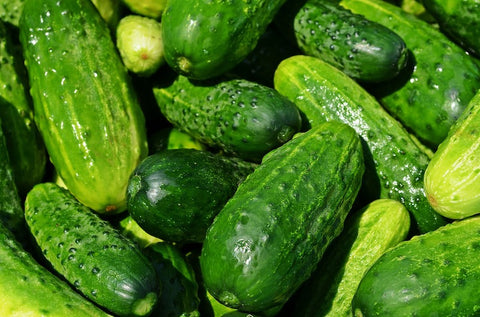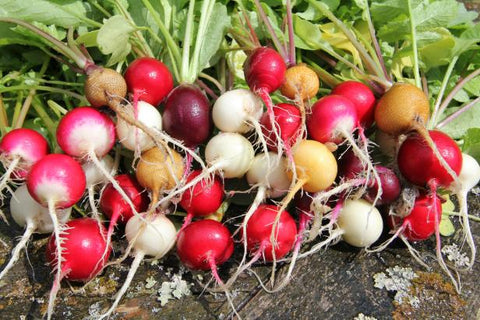Roses have long been admired for their beauty and fragrance, but many people believe they are difficult to grow. It's time to debunk this myth and explore why growing roses is a rewarding endeavor that is well worth the effort.

Debunking the Myth: Roses are Difficult to Grow
Contrary to popular belief, roses aren't as finicky as they seem. With the right knowledge and a bit of care, even novice gardeners can successfully cultivate these stunning flowers. The key lies in understanding their basic needs and providing a suitable environment.
Why Roses Are Worth the Effort
Roses bring unmatched elegance to any garden. Their vibrant blooms and enchanting scents can transform a simple backyard into a floral paradise. Moreover, the sense of accomplishment that comes from nurturing these beauties is unparalleled.
Choosing the Right Rose Varieties
Different Types of Roses Explained
Roses come in various types, including hybrid teas, floribundas, grandifloras, and climbers. Hybrid teas are known for their large, single blooms on long stems, making them ideal for cutting. Floribundas produce clusters of smaller flowers, while grandifloras offer a mix of both. Climbers, as the name suggests, are perfect for trellises and arches.
Best Rose Varieties for Beginners
For beginners, choosing hardy and disease-resistant varieties is crucial. Some excellent options include 'Knock Out' roses, which are known for their resilience and continuous blooms, and 'Iceberg' roses, celebrated for their prolific flowering and low maintenance.
Climate Considerations for Rose Selection
Your local climate plays a significant role in rose selection. Some varieties thrive in cooler temperatures, while others prefer warmer climates. To ensure success, choose roses that are best suited to your individual growth conditions.
Preparing Your Garden
Ideal Soil Conditions for Roses
Roses prefer well-draining soil rich in organic matter. A slightly acidic pH between 6.0 and 6.5 is ideal. Improving soil quality with compost or well-rotted manure can provide the necessary nutrients for healthy growth.
Picking the Perfect Spot in Your Garden
Choose a sunny location for your rose garden. Roses require a minimum of six hours of direct sunlight each day. Ensure good air circulation to prevent disease and place them in an area with protection from strong winds.
Preparing the Soil: Tips and Tricks
Begin by eliminating all weeds and trash from the planting area. Dig a hole large enough to accommodate the roots, and mix the soil with compost to enhance fertility. Mulching can assist keep moisture in the soil and regulate its temperature.

Planting Roses
When to Plant Roses for Optimal Growth
The best time to plant roses is in early spring or fall when temperatures are moderate. This allows the plants to establish roots before the onset of extreme weather conditions.
Step-by-Step Guide to Planting Bare-Root Roses
- Soak the roots in water for a few hours prior to planting.
- Before planting, immerse the roots in water for a few hours.
- Make a hole deep enough to contain the roots without bending them.
- Backfill with dirt, gently pushing to remove air pockets.
- Water thoroughly to settle the soil.
Planting Container Roses: Easy and Quick
- Remove the rose from its container, taking care not to damage the roots.
- Dig a hole twice the width of the root ball.
- Place the rose in the hole, level with the surrounding soil.
- Fill in with soil and gently firm it around the plant.
- Water well to help the plant settle.
Watering Your Roses
How Much Water Do Roses Really Need?
Roses require consistent moisture but not waterlogged soil. On average, they need about 1-2 inches of water per week. Adjust based on weather conditions, increasing during hot, dry spells.
Best Practices for Watering Roses
Water at the base of the plant to keep foliage dry and reduce the risk of disease. Early morning watering is ideal, allowing foliage to dry before evening. Using soaker hoses or drip irrigation can provide a steady, gentle water supply.
Common Watering Mistakes to Avoid
Avoid overhead watering, as it could cause fungal illnesses. Don't water too frequently or let the soil become waterlogged, as this can suffocate the roots and cause rot.
Feeding and Fertilizing Roses
Understanding Rose Nutrient Needs
Roses are heavy feeders and require a balanced diet of nitrogen, phosphorus, and potassium. Additionally, micronutrients like magnesium and iron are essential for vibrant blooms and healthy foliage.
Feeding Schedule for Healthy Roses
Feed roses in early spring as new growth appears, again after the first bloom cycle, and once more in mid-summer. Avoid fertilizing late in the season, as this can promote new growth susceptible to frost damage.

Pruning and Deadheading
Why Pruning is Essential for Rose Health
Pruning removes dead or diseased wood, encourages new growth, and shapes the plant. It enhances air circulation, reducing the risk of disease and promoting more vigorous blooming.
How to Prune Roses Like a Pro
- Use sharp, clean pruners to make cuts at a 45-degree angle.
- Remove any dead, damaged, or diseased canes.
- Cut back remaining canes by one-third to half, just above an outward-facing bud.
- Thin out the center to improve air circulation.
Deadheading Roses: Keeping Them Blooming
Deadheading, or removing old blossoms, promotes the plant to grow new flowers. Simply cut off the faded blooms just above the first set of healthy leaves.
Pest and Disease Management
Common Rose Pests and How to Handle Them
Aphids, spider mites, and Japanese beetles are common rose pests. Handpick pests or use insecticidal soap to control infestations. Introducing beneficial insects like ladybugs can also help keep pest populations in check.
Identifying and Treating Rose Diseases
Black spot, powdery mildew, and rust are common rose diseases. Regularly inspect your plants and remove any infected foliage. Applying a fungicide early in the season can prevent outbreaks.
Natural Remedies for Rose Pests and Diseases
Neem oil, garlic spray, and companion planting with marigolds or garlic can deter pests and diseases naturally. Maintaining good garden hygiene by cleaning up fallen leaves and debris helps prevent disease spread.
Mulching and Weed Control
Benefits of Mulching Your Rose Beds
Mulching retains soil moisture, suppresses weeds, and moderates soil temperature. It also provides organic matter to the soil as it decomposes, increasing soil fertility.
Choosing the Right Mulch for Roses
Organic mulches like wood chips, straw, or compost are ideal for roses. Avoid using fresh grass clippings or leaves, as these can create a dense mat that restricts air and water flow.
Effective Weed Control Strategies
Apply a thick layer of mulch, about 2-3 inches deep, to prevent weed growth. Hand-pull any weeds that do emerge, and use landscape fabric under the mulch for additional weed control.

Supporting Your Roses
When and How to Stake Roses
Staking is essential for tall or newly planted roses to prevent them from toppling over. Use sturdy stakes and soft ties, securing the plant loosely to avoid damaging the canes.
Using Trellises and Arches for Climbing Roses
Climbing roses require support to grow vertically. Trellises, arches, and fences provide the necessary structure. Secure the canes to the support with soft ties, training them to spread horizontally for more blooms.
Preventing Wind Damage to Your Roses
Plant roses in sheltered locations or use windbreaks to protect them from strong winds. Staking and securing the canes can also help prevent breakage and damage.
Seasonal Care Tips
Spring Care: Getting Roses Ready for Blooming
In early spring, prune your roses, apply a balanced fertilizer, and top off the mulch. This preparation sets the stage for a healthy growing season and abundant blooms.
Summer Care: Maintaining Health and Vibrancy
Water regularly, deadhead spent blooms, and watch for pests and diseases. Apply a mid-summer feeding to support continued growth and flowering.
Fall Care: Preparing Roses for Winter
Stop fertilizing in late summer to allow plants to harden off before winter. Prune lightly, remove any diseased foliage, and apply a thick layer of mulch to insulate the roots.
Winter Care: Protecting Roses from the Cold
In colder climates, cover the base of the plant with soil or mulch to protect it from freezing temperatures. Consider using rose cones or burlap wraps for additional protection.
Propagating Roses
How to Propagate Roses from Cuttings
- Take cuttings from healthy, mature stems in late spring or early summer.
- Dip the cut end in the rooting hormone.
- Plant the cutting in a pot containing a mixture of potting soil and perlite.
- Keep the soil moist and set the pot in a warm, bright area.
Grafting Roses: A Step-by-Step Guide
Grafting involves joining a piece of one plant (scion) to the rootstock of another. This technique combines the best traits of both plants, such as disease resistance and flower quality.
Growing Roses from Seeds: Patience Pays Off
Growing roses from seeds is a slow process but can be rewarding. Sow seeds in a sterile seed-starting mix, keep them moist and be patient as germination can take several weeks to months.

Dealing with Bloom Issues
Why Your Roses Aren’t Blooming and How to Fix It
Lack of blooms can be due to insufficient sunlight, poor soil, or improper pruning. Ensure your roses get at least six hours of sunlight, feed them appropriately, and prune them to encourage new growth.
Enhancing Rose Blooms with Simple Techniques
Deadheading, regular feeding, and providing adequate water can enhance blooming. Adding organic matter to the soil and ensuring proper sunlight also contribute to more vibrant blooms.
Long-Lasting Blooms: Tips for Prolonging Flowering
Consistent care, including deadheading, feeding, and proper watering, ensures long-lasting blooms. Using slow-release fertilizers can provide steady nutrients throughout the growing season.
Eco-Friendly Rose Gardening
Sustainable Practices for Growing Roses
Opt for organic fertilizers, use natural pest control methods, and conserve water through mulching and efficient irrigation. These practices reduce your garden’s environmental footprint.
Organic Pest Control Methods
Introduce beneficial insects, use neem oil, and plant companion plants to deter pests naturally. Avoid chemical pesticides that can harm beneficial organisms and the environment.
Reducing Your Garden’s Carbon Footprint
Reduce carbon emissions by composting garden waste, using local materials, and minimizing the use of fossil fuel-powered equipment. Embrace renewable energy sources where possible.
Troubleshooting Common Problems
Yellow Leaves on Roses: Causes and Solutions
Yellow leaves can indicate nutrient deficiencies, overwatering, or disease. Conduct a soil test to determine nutrient levels and adjust watering practices to avoid waterlogging.
Black Spot and Mildew: Prevention and Treatment
Black spots and mildew are common fungal diseases. Prevent them by ensuring good air circulation, watering at the base, and applying fungicides as needed. Remove and dispose of infected leaves promptly.
Reviving a Neglected Rose Bush
Prune dead or damaged canes, feed with a balanced fertilizer, and water deeply to revive a neglected rose bush. Mulch around the base and monitor for pests and diseases.
Growing roses is easier than you think with the right knowledge and techniques. Start your rose gardening journey today and enjoy the rewards of beautiful, fragrant blooms. Numerous resources are available for further learning and inspiration, so dive in and let your rose garden flourish.









